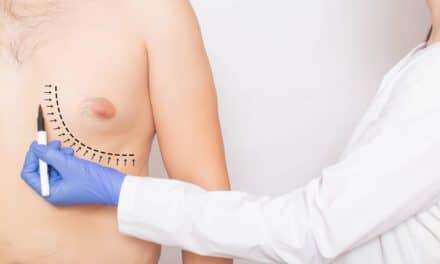At the recent American Society of Plastic Surgeons meeting in Chicago, Sydney Coleman, MD, a New York-based plastic surgeon, and other medical panelists revisited the topic of fat grafting to the breast and its efficacy in breast augmentation.
 |
| Breast augmentation via fat grafting can produce natural-looking results for patients who require reconstruction or augmentation. |
For more than a century, plastic surgeons have used autologous fat to enlarge and reshape breasts. In the early 1980s, plastic surgeons began using liposuction as a potential source of autologous tissue for breast augmentation. Surgeons began placing the fatty tissue that was removed with liposuction into the breast.
However, none of these techniques were widely used because of safety concerns, which include the implication that the injected fat will not survive and, most importantly, that there may be scarring and calcification, which may compromise breast cancer detection.
Over the last decade, scientific reports from France, Italy, China, Japan, and the United States have surfaced about the efficacy of fat grafting for breast reconstruction, the treatment of radiation damage to the chest, the reduction of breast capsular contracture, and soft-tissue coverage of breast implants.
As Coleman describes his technique of structural fat grafting, fat is harvested using a 10-mL syringe attached to a two-hole Coleman harvesting cannula. After centrifugation and refinement, the fat is transferred to 3-mL syringes. Blunt infiltration cannulas are used to place the fat through 2-mm incisions. Blunt cannulas not only allow more dispersion of the grafted tissue in small aliquots, but also reduce the chance of intravascular injection. Sharp needles are not used for injection into the breast.
The incisions are positioned to allow placement from at least two directions into each grafted area.
Approximately 0.2 mL is placed with each withdrawal of the cannula, Coleman continues. Shaping of the breasts is accomplished by layering the fat into different levels until the desired contour is achieved.
Although a breast implant augments by expanding the retropectoral spaces, Coleman says, this technique allows selective augmentation and contouring from the chest wall to the skin. In most cases, the largest portion of the fat is infiltrated into the pectoralis major muscle, followed by the retropectoral and prepectoral spaces. Shaping of the breast is accomplished with placement subcutaneously into the superficial breast planes. Placement into the parenchyma of the breast is limited and performed in order to further increase projection.
 |
ADVANTAGES AND DISADVANTAGES
According to Coleman, fat grafting has advantages and disadvantages when compared to implants. Breast augmentation using fat grafting is not associated with implant-related problems, such as implant leakage or deflation, visible or palpable implants, or the development of breast capsular contracture.
However, there are several limitations. Breast augmentation using his fat-grafting technique is a very time-consuming procedure, and the large volume changes commonly attained with implants are not possible using structural fat grafting.
According to Coleman, long-lasting, natural improvements in the size and shape of a breast are possible with a specific technique of fat grafting. When harvested and refined with minimal trauma and when placed in small aliquots, the transplanted free fat grafts can remain viable and provide a structure and shape to the breast that cannot be achieved with implants alone or with other types of surgery.
On the other hand, autologous fat grafting to the breast can be used for simple aesthetic augmentation of a breast.
|
See also “The Beauty of Fat” by Henry A. Mentz III, MD, FACS, FICS, and Amado Ruiz-Razura, MD, FACS, FICS, in the June 2005 issue of PSP. |
The most important consideration with fat grafting to the breast is the safety of the patients, according to Coleman. Fat placed even in small amounts with each pass can develop small cysts and calcifications.
However, breast cancer detection, not the incidence of calcifications, remains the safety issue.
“For breast reconstruction, there are some good data to support the safety and efficacy of fat injections, but for cosmetic use, it’s a whole new ball game,” says William P. Adams Jr., MD, a Dallas plastic surgeon and associate clinical professor of plastic surgery at the University of Texas Southwestern Medical Center, Dallas. Adams was among the doctors who discussed the technique at the ASPS fall meeting.
Adams, among others, have pointed out that no studies as yet prove the effectiveness and safety of fat injections for breast augmentation.



